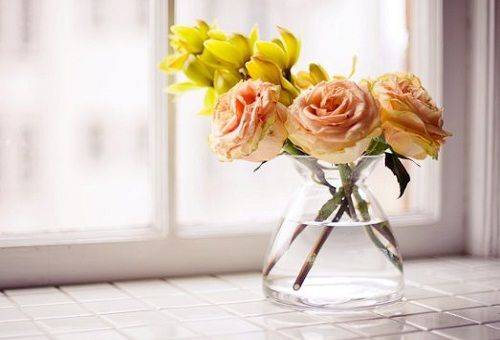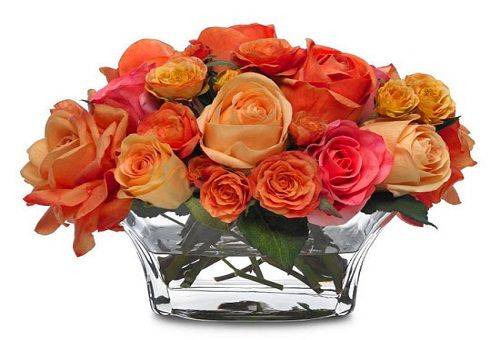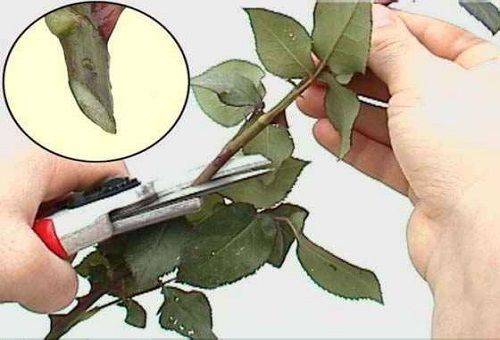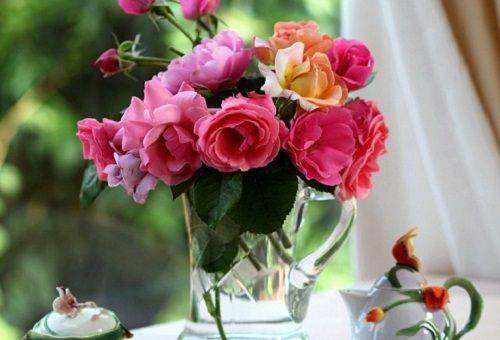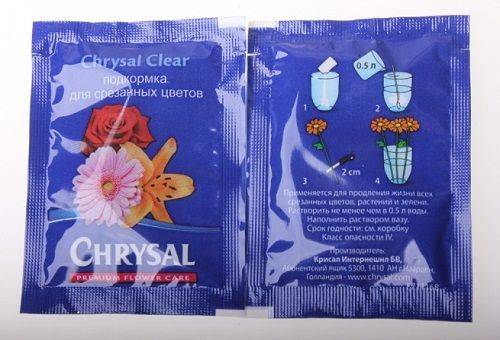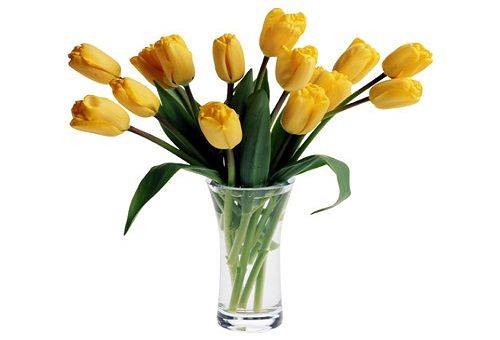With what and for as long as possible to save cut flowers in a vase?
Content:
Fresh flowers can transform even the most boring and dull decor, but the age of cut plants is very short-lived. Fortunately, florists know how to keep a bouquet for a long time and are happy to share their secrets with others. If all the manipulations are properly performed, you can admire the beautiful flower arrangement in an elegant vase for several weeks. It will take a lot of effort, but the result is definitely worth it.
And it all starts with the purchase of a bouquet, because today only a few are engaged in growing flowers. Choosing a suitable plant ensemble, you need to pay attention to the following points:
- Petals and leaves should have a bright and juicy color. Dark spots and dried edges indicate the beginning of the wilting process and no measures will allow you to keep the bouquet longer than a few days.
- Short stems with a slimy, darkened cut are signs of old flowers.
- Recently cut plants are distinguished by sufficient moisture and elasticity. If you bend a piece of leaf or petal, it should quickly return to its place without the formation of bend marks.
- Sellers often try to hide the signs of wilting by removing individual parts of the flower. If a particular instance looks naked, it most likely came under such a correction.
A bouquet will stand in a vase for a long time only if it is composed of fragrant flowers that literally exude moisture, with tight buds and leaves tightly sitting in the boxes.
Proper bouquet preparation and water disinfection
Cut flowers will stand many times longer if the following manipulations are performed before installing them in a vase:
- We lower the stems into the water and on each we do an oblique cut. After that, it is no longer possible to remove the plant from the liquid. This procedure prevents the process of blockage of blood vessels by air bubbles, which provokes dehydration of the flower.
- Just before the arrangement of the bouquet in the vase, you need to remove all the leaves, antennae and thorns that will be located in the water. Then the growth of bacteria will slow down, and the absorption of unnecessary elements of nutrient components will be reduced.
- Very dense and thick stems need not only to be trimmed, but also split 5 cm deep by inserting matches into the faults. Then the flowers will not lack moisture and will stand longer.
Tip: The same technique can apply to delicate plants with soft stems. In this case, the cut surface only needs to be scratched with a sharp needle, this will significantly increase the absorption capacity of the element.
- Particular attention should be paid to specimens with hollow stems. Carefully pour water into them and plug the holes with cotton or gauze. With a significant allocation of milky juice, you can lower the ends of the trunks in boiling water or slightly burn them.
- Flowers such as lilies and tulips will stand in a vase much longer if they immediately remove the anthers. This applies to all plants with long stamens.
Cut plants prefer soft water, best if it is rain, melt, well or spring. If there is nothing other than tap water, you must first defend it for a day and drain so as to get rid of sediment.
To cope with bacteria that multiply rapidly in the water with flowers, you can by simple disinfection:
- At the bottom, you can put a silver coin or some charcoal.
- A good effect is given by a pinch of washing powder or a crushed tablet of aspirin (one piece per 5 liters of liquid).
- For high-quality disinfection in a vase with water, it is enough to dissolve a choice of a pinch of potassium permanganate, a teaspoon of sodium chloride, 100 mg of boric acid or a tablespoon of vinegar.
All of these manipulations will help the flowers last as long as possible, but we must not forget about the proper care of the bouquet. You can’t just put it in and forget it, maintaining the attractiveness of flowers implies a number of auxiliary daily operations.
Suitable dressing options for freshly cut flowers
Cut plants will not last longer than one week, if you do not provide them with full and regular feeding. For this purpose, it is customary to use one of the following products at home:
- Sugar. Introduced in the ratio of 1.5 teaspoons per liter of water. This is a universal remedy, but most often it is used to care for tulips, carnations and daffodils.
- Alcohol. Recommended to keep asters fresh. You need to add no more than a teaspoon of the product for every liter of water.
- Aspirin. Just one tablet is enough to maintain the attractiveness of an impressive bouquet of roses or chrysanthemums.
- Vinegar. A weak solution of table vinegar will preserve cut dahlias for a long time.
- Industrial top dressing. They can be universal or specialized, in the form of powder or drops. Using the selected product, it is necessary to act strictly according to the instructions. If you exceed the recommended dosage, the plants will not stand longer, but there is a risk of burns in the flowers.
Water in a vase needs to be changed every day, while top dressing must be updated. It is undesirable to change it, for tender representatives of the flora this can become serious stress.
Where is the best place to put a bouquet and how to care for it?
The correct arrangement of the bouquet has no less effect on the condition of flowers than caring for plants. In the case of cut elements, the following rules apply:
- Lighting should be as natural and high-quality as possible, but direct sunlight is unacceptable. With increased solar activity, buds and leaves are best shaded or even removed deep into the room.
- Fresh flowers do not like heat. The bouquet is best placed in a cool room. It should not be forgotten that drafts for living plants are fatal.
- Particular attention should be paid to the composition. There are flowers that are absolutely incompatible and do not get along in one bouquet. For example, roses, orchids, lilies of the valley, lilies and daffodils are considered recognized egoists, they must be located separately. But geranium and thuja on the contrary love complex ensembles and maintain the freshness of their neighbors.
- It is highly recommended not to arrange flowers in the vicinity of fruits. Food products emit ethylene - a gas that promotes the maturation and wilting of plants. A similar ensemble will look attractive, but will not last very long.
Here are some more simple recommendations that will help to maintain the freshness and attractiveness of a bouquet of cut flowers for a long time:
- Changing water daily, you need to remember not only the introduction of fertilizing, but also the disinfection of fluids.
- Withered or dried leaves and petals must be removed immediately.
- Slices of stems also need to be regularly updated literally a few millimeters. If you do not do this daily, then the access of moisture and nutrients to the elements of the plant is impaired.
- Large leaves will have to be sprayed with a little warm water from a spray bottle. Some types of flowers at night can be laid out in a bathtub with cool water. The liquid should not fall on the buds.
- The temperature in the room where the flowers stand is best kept slightly below comfortable, within 15-18ºС. In extreme cases, the room needs to be well ventilated several times a day. In this case, the bouquet must be taken out to another room.
The importance of the physical and chemical conditions for the content of fresh flowers is undeniable, but do not dismiss the atmosphere in the room. Plants are no less acute than people undergoing stress. Therefore, you should not rely on the fact that the bouquet will stand for a long time if there is some tension between the inhabitants of the house.
